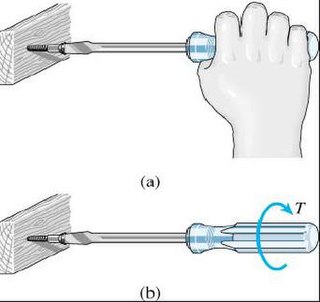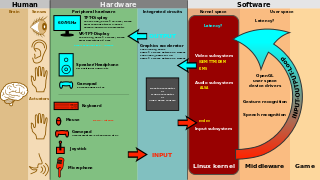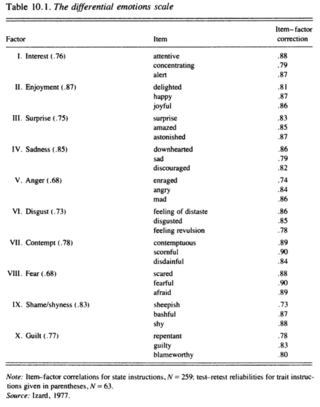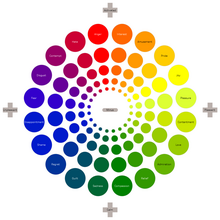Psychophysiology is the branch of psychology that is concerned with the physiological bases of psychological processes. While psychophysiology was a general broad field of research in the 1960s and 1970s, it has now become quite specialized, based on methods, topic of studies and scientific traditions. Methods vary as combinations of electrophysiological methods, neuroimaging, and neurochemistry. Topics have branched into subspecializations such as social, sport, cognitive, cardiovascular, clinical and other branches of psychophysiology.

Usability can be described as the capacity of a system to provide a condition for its users to perform the tasks safely, effectively, and efficiently while enjoying the experience. In software engineering, usability is the degree to which a software can be used by specified consumers to achieve quantified objectives with effectiveness, efficiency, and satisfaction in a quantified context of use.
Gameplay is the specific way in which players interact with a game, and in particular with video games. Gameplay is the pattern defined through the game rules, connection between player and the game, challenges and overcoming them, plot and player's connection with it. Video game gameplay is distinct from graphics and audio elements. In card games, the equivalent term is play.
User experience (UX) is how a user interacts with and experiences a product, system or service. It includes a person's perceptions of utility, ease of use, and efficiency. Improving user experience is important to most companies, designers, and creators when creating and refining products because negative user experience can diminish the use of the product and, therefore, any desired positive impacts. Conversely, designing toward profitability as a main objective often conflicts with ethical user experience objectives and even causes harm. User experience is subjective. However, the attributes that make up the user experience are objective.
Kansei engineering aims at the development or improvement of products and services by translating the customer's psychological feelings and needs into the domain of product design. It was founded by Mitsuo Nagamachi, Professor Emeritus of Hiroshima University. Kansei engineering parametrically links the customer's emotional responses to the properties and characteristics of a product or service. In consequence, products can be designed to bring forward the intended feeling.

User interface (UI) design or user interface engineering is the design of user interfaces for machines and software, such as computers, home appliances, mobile devices, and other electronic devices, with the focus on maximizing usability and the user experience. In computer or software design, user interface (UI) design primarily focuses on information architecture. It is the process of building interfaces that clearly communicate to the user what's important. UI design refers to graphical user interfaces and other forms of interface design. The goal of user interface design is to make the user's interaction as simple and efficient as possible, in terms of accomplishing user goals.
Affective science is the scientific study of emotion or affect. This includes the study of emotion elicitation, emotional experience and the recognition of emotions in others. Of particular relevance are the nature of feeling, mood, emotionally-driven behaviour, decision-making, attention and self-regulation, as well as the underlying physiology and neuroscience of the emotions.
A pain scale measures a patient's pain intensity or other features. Pain scales are a common communication tool in medical contexts, and are used in a variety of medical settings. Pain scales are a necessity to assist with better assessment of pain and patient screening. Pain measurements help determine the severity, type, and duration of the pain, and are used to make an accurate diagnosis, determine a treatment plan, and evaluate the effectiveness of treatment. Pain scales are based on trust, cartoons (behavioral), or imaginary data, and are available for neonates, infants, children, adolescents, adults, seniors, and persons whose communication is impaired. Pain assessments are often regarded as "the 5th vital sign".
Situational awareness or situation awareness (SA) is the understanding of an environment, its elements, and how it changes with respect to time or other factors. Situational awareness is important for effective decision making in many environments. It is formally defined as:
“the perception of the elements in the environment within a volume of time and space, the comprehension of their meaning, and the projection of their status in the near future”.
Quality of experience (QoE) is a measure of the delight or annoyance of a customer's experiences with a service. QoE focuses on the entire service experience; it is a holistic concept, similar to the field of user experience, but with its roots in telecommunication. QoE is an emerging multidisciplinary field based on social psychology, cognitive science, economics, and engineering science, focused on understanding overall human quality requirements.
Affective design describes the design of products, services, and user interfaces that aim to evoke intended emotional responses from consumers, ultimately improving customer satisfaction. It is often regarded within the domain of technology interaction and computing, in which emotional information is communicated to the computer from the user in a natural and comfortable way. The computer processes the emotional information and adapts or responds to try to improve the interaction in some way. The notion of affective design emerged from the field of human–computer interaction (HCI), specifically from the developing area of affective computing. Affective design serves an important role in user experience (UX) as it contributes to the improvement of the user's personal condition in relation to the computing system. Decision-making, brand loyalty, and consumer connections have all been associated with the integration of affective design. The goals of affective design focus on providing users with an optimal, proactive experience. Amongst overlap with several fields, applications of affective design include ambient intelligence, human–robot interaction, and video games.
Sentiment analysis is the use of natural language processing, text analysis, computational linguistics, and biometrics to systematically identify, extract, quantify, and study affective states and subjective information. Sentiment analysis is widely applied to voice of the customer materials such as reviews and survey responses, online and social media, and healthcare materials for applications that range from marketing to customer service to clinical medicine. With the rise of deep language models, such as RoBERTa, also more difficult data domains can be analyzed, e.g., news texts where authors typically express their opinion/sentiment less explicitly.
User experience design defines the experience a user would go through when interacting with a company, its services, and its products. User experience design is a user centered design approach because it considers the user's experience when using a product or platform. Research, data analysis, and test results drive design decisions in UX design rather than aesthetic preferences and opinions. Unlike user interface design, which focuses solely on the design of a computer interface, UX design encompasses all aspects of a user's perceived experience with a product or website, such as its usability, usefulness, desirability, brand perception, and overall performance. UX design is also an element of the customer experience (CX), and encompasses all aspects and stages of a customer's experience and interaction with a company.
The self-perceived quality-of-life scale is a psychological assessment instrument which is based on a comprehensive theory of the self-perceived quality of life (SPQL) and provides a multi-faceted measurement of health-related and non-health-related aspects of well-being. The scale has become an instrument of choice for monitoring quality of life in some clinical populations, for example, it was adopted by the Positively Sound network for women living with HIV.
Peer assessment, or self-assessment, is a process whereby students or their peers grade assignments or tests based on a teacher's benchmarks. The practice is employed to save teachers time and improve students' understanding of course materials as well as improve their metacognitive skills. Rubrics are often used in conjunction with self- and peer-assessment.
The Questionnaire For User Interaction Satisfaction (QUIS) is a tool developed to assess users' subjective satisfaction with specific aspects of the human-computer interface. It was developed in 1987 by a multi-disciplinary team of researchers at the University of Maryland Human–Computer Interaction Lab. The QUIS is currently at Version 7.0 with demographic questionnaire, a measure of overall system satisfaction along 6 scales, and measures of 9 specific interface factors. These 9 factors are: screen factors, terminology and system feedback, learning factors, system capabilities, technical manuals, on-line tutorials, multimedia, teleconferencing, and software installation. Currently available in: German, Italian, Portuguese, and Spanish.
Subjective well-being (SWB) is a self-reported measure of well-being, typically obtained by questionnaire.
Diary studies is a research method that collects qualitative information by having participants record entries about their everyday lives in a log, diary or journal about the activity or experience being studied. This collection of data uses a longitudinal technique, meaning participants are studied over a period of time. This research tool, although not being able to provide results as detailed as a true field study, can still offer a vast amount of contextual information without the costs of a true field study. Diary studies are also known as experience sampling or ecological momentary assessment (EMA) methodology.

The Differential Emotions Scale (DES) is a multidimensional self-report device for assessment of an individual's emotions. The DES helps measure mood based on Carroll Izard's differential emotions theory, The DES consists of thirty items, three for each of the ten fundamental emotions as visualized by Izard: interest, joy, surprise, sadness, anger, disgust, contempt, fear, shame/ shyness, and guilt, which are represented on 5-point Likert scale. There are currently four different versions of the scale. Despite the different versions, the basic idea of are very similar. Participants are asked to rate each of the emotions on a scale, and depending on the instructions given, they either rate their current feelings, feelings over the past week, or over long-term traits. The DES is similar to other scales such as the Multiple Affect Adjective Check List (MAACL) and the Multiple Affect Adjective Check List-Revised (MAACL-R) which are used to assess either the state or trait affect by varying the time of which instructions are given to the participants.

The EmojiGrid is an affective self-report tool consisting of a rectangular grid that is labelled with emojis. It is trademark of Kikkoman. The facial expressions of the emoji labels vary from disliking via neutral to liking along the x-axis, and gradually increase in intensity along the y-axis. To report their affective appraisal of a given stimulus, users mark the location inside the grid that best represents their impression. The EmojiGrid can either be used as a paper or computer-based response tool. The images needed to implement the EmojiGrid are freely available from the OSF repository.




